
How to Use 3.5mm Audio Jack 3 Pin: Examples, Pinouts, and Specs
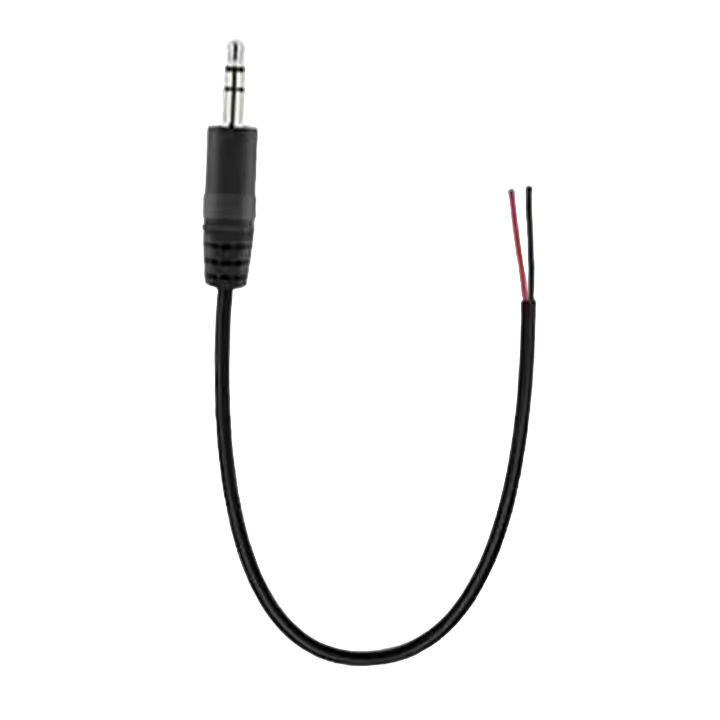
 Design with 3.5mm Audio Jack 3 Pin in Cirkit Designer
Design with 3.5mm Audio Jack 3 Pin in Cirkit DesignerIntroduction
The 3.5mm Audio Jack 3 Pin, commonly referred to as a TRS (Tip, Ring, Sleeve) connector, is a widely used audio connector in various electronic devices. It is designed to carry audio signals for applications such as headphones, earphones, microphones, and auxiliary connections in vehicles and home audio systems.
Explore Projects Built with 3.5mm Audio Jack 3 Pin
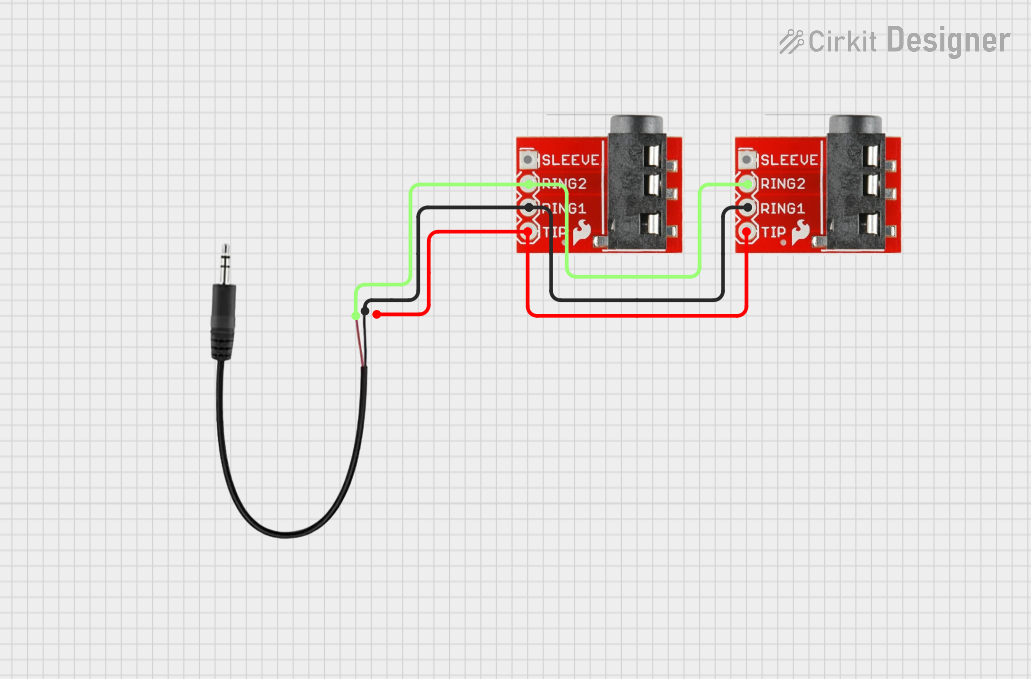
 Open Project in Cirkit Designer
Open Project in Cirkit Designer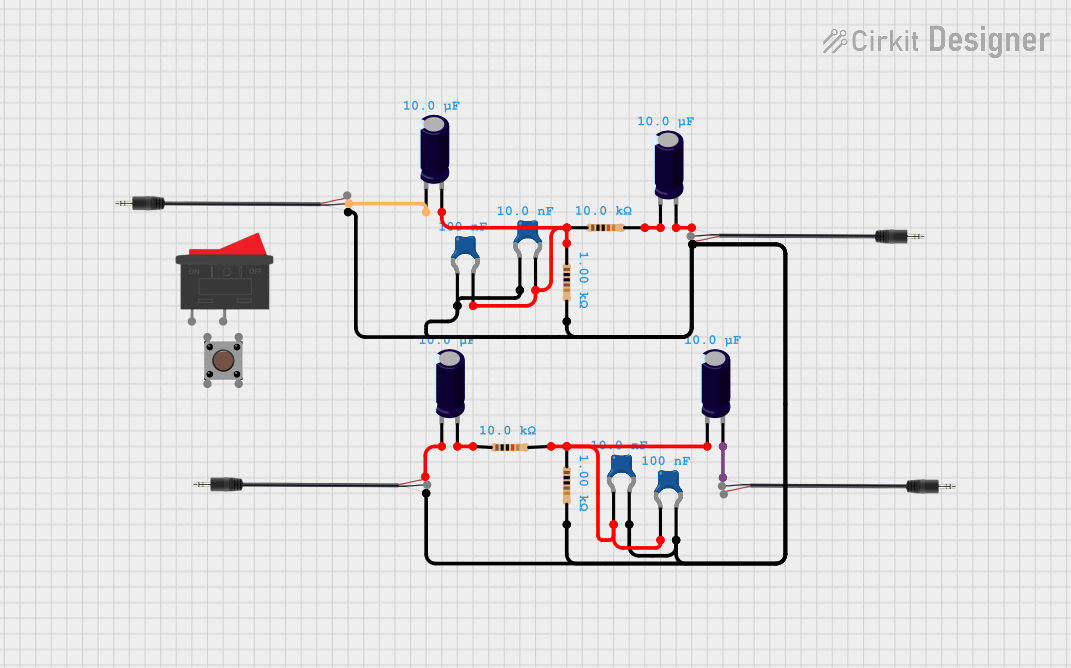
 Open Project in Cirkit Designer
Open Project in Cirkit Designer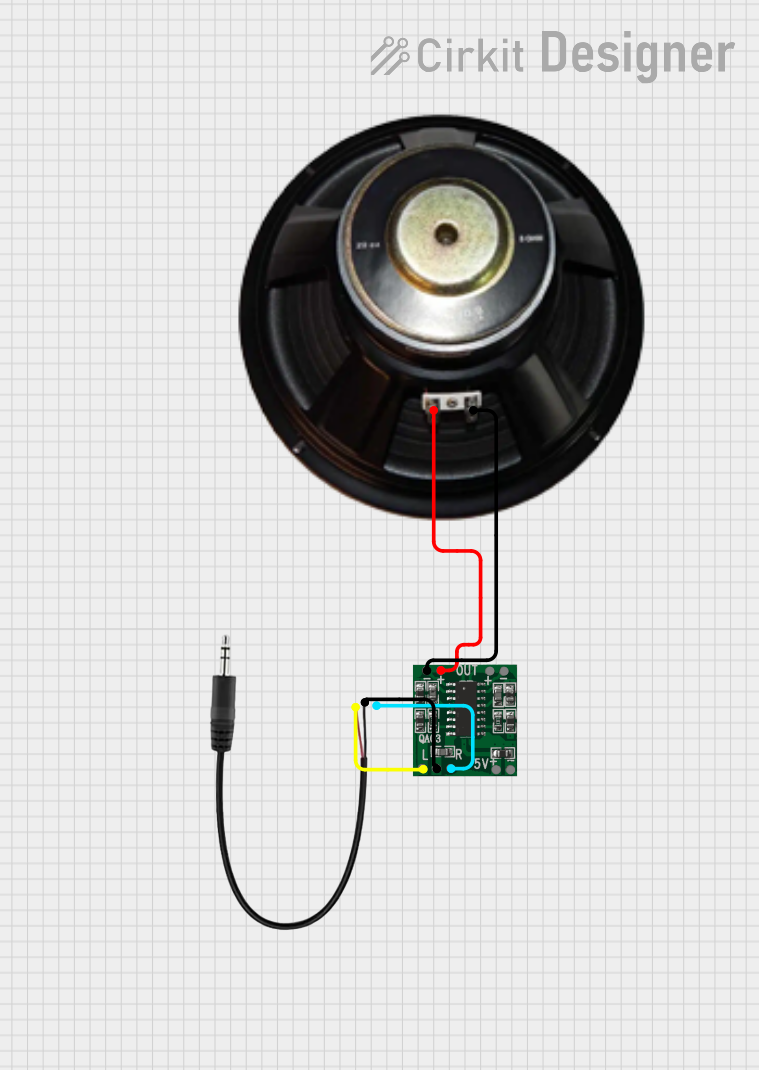
 Open Project in Cirkit Designer
Open Project in Cirkit Designer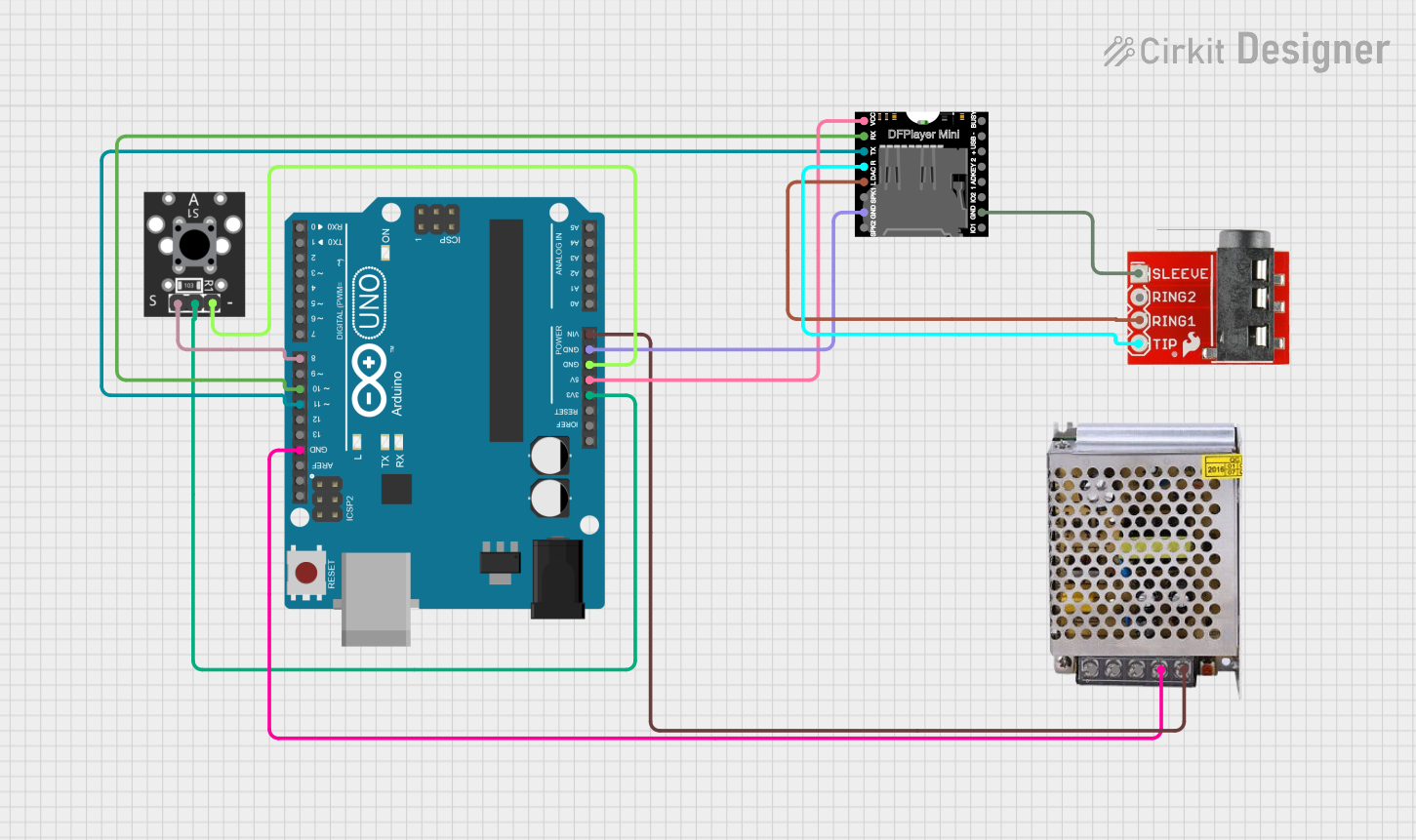
 Open Project in Cirkit Designer
Open Project in Cirkit DesignerExplore Projects Built with 3.5mm Audio Jack 3 Pin

 Open Project in Cirkit Designer
Open Project in Cirkit Designer
 Open Project in Cirkit Designer
Open Project in Cirkit Designer
 Open Project in Cirkit Designer
Open Project in Cirkit Designer
 Open Project in Cirkit Designer
Open Project in Cirkit DesignerCommon Applications and Use Cases
- Personal audio devices (MP3 players, mobile phones, tablets)
- Home audio systems (speakers, amplifiers)
- Professional audio equipment (mixers, audio interfaces)
- Computer audio (sound cards, speakers)
- In-car auxiliary ports
Technical Specifications
Key Technical Details
- Connector Type: 3.5mm TRS (Tip, Ring, Sleeve)
- Number of Pins: 3
- Contact Material: Typically brass with nickel or gold plating
- Insulation Material: Plastic or rubber for external insulation
- Rated Voltage: Typically up to 24V (peak)
- Rated Current: Typically up to 0.5A
Pin Configuration and Descriptions
| Pin Number | Name | Description |
|---|---|---|
| 1 | Tip | Carries the left audio channel signal in stereo applications or the audio signal in mono applications. |
| 2 | Ring | Carries the right audio channel signal in stereo applications. |
| 3 | Sleeve | Common ground reference for the audio signals. |
Usage Instructions
How to Use the Component in a Circuit
- Identify the Pins: Locate the tip, ring, and sleeve contacts on the audio jack.
- Soldering: Solder the appropriate wires to the corresponding pins. Use a low wattage soldering iron to avoid damaging the jack.
- Connection: Connect the left audio channel to the tip, the right audio channel to the ring, and the ground wire to the sleeve.
- Insulation: Ensure that the connections are insulated to prevent short circuits.
- Testing: Before powering up the circuit, test the connections with a multimeter to ensure there are no shorts.
Important Considerations and Best Practices
- Strain Relief: Provide strain relief for the cables connected to the audio jack to prevent mechanical stress on the solder joints.
- Signal Integrity: Use shielded cables for audio connections to minimize interference and maintain signal integrity.
- Mounting: If the audio jack is panel-mounted, ensure a secure fit to prevent movement that could cause intermittent connections.
Troubleshooting and FAQs
Common Issues Users Might Face
- Loose Connections: If audio is intermittent or absent, check for loose solder joints or broken wires.
- Crossed Wires: Ensure that the left and right channels are not accidentally crossed.
- Short Circuits: If there is no sound or distortion, check for shorts between the pins with a multimeter.
Solutions and Tips for Troubleshooting
- Resoldering: If a connection is loose, resolder the wire to the appropriate pin.
- Wire Identification: Use a multimeter's continuity function to trace and verify the correct wiring.
- Inspection: Visually inspect the jack for any signs of damage or wear that could affect performance.
FAQs
Q: Can I use this audio jack for a mono application? A: Yes, you can use the tip for the audio signal and the sleeve for ground.
Q: What is the best way to solder wires to the audio jack? A: Use a low wattage soldering iron, apply a small amount of solder to the pin, and then heat the pin and wire together to form a solid joint.
Q: How can I prevent audio interference? A: Use shielded cables and ensure that the audio jack is properly grounded.
Note: This documentation is for a generic 3.5mm Audio Jack 3 Pin with the part ID "Jack" by a manufacturer named "Nobody." The specifications and instructions provided are based on common standards for this type of component and may vary for a specific manufacturer's part. Always consult the manufacturer's datasheet for precise information.